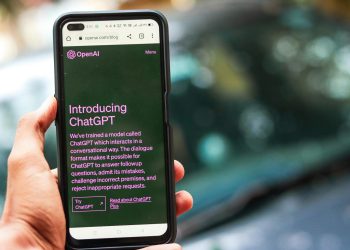Getting to Know Large Language Models
Let's dive into the world of Large Language Models (LLMs), a game changer for businesses and tech enthusiasts. These powerful tools are reshaping how we engage with tech. We'll give you the scoop on what these models are all about and how they've evolved over the years.
Introduction to LLMs
LLMs, short for Large Language Models, are sleek AI models with a knack for understanding and cranking out human-like text. Imagine having models trained on a massive stash of data scooped from every corner of the internet. Thanks to major tech wizards like Microsoft, Google, NVIDIA, and others, these models are equipped to handle a variety of tasks with laser-like precision.
Here’s a quick rundown of what LLMs bring to the table:
- Spot-On Accuracy: Whether it's whipping up text, translating, summarizing, or answering questions, LLMs nail it. Their secret? Deep learning algorithms coupled with colossal datasets.
- Jacks of All Trades: Interested in tweaking models for specific needs? No problem. They’re perfect for countless fields, from customer service to content creation.
Curious about the nitty-gritty of LLMs? Check out our deep dive on how large language models work.
Evolution of LLMs
LLMs have come a long way, sprouting from advances in computing power, a hearty supply of data, and algorithm innovation.
| Year | Model | What's New? |
|---|---|---|
| 2018 | BERT | Transformer tech, works two-way |
| 2020 | GPT-3 | Boasts 175 billion parameters |
| 2021 | T5 | Unifying text tasks |
| 2022 | Codex | More smarts for code |
Here's a highlight reel of LLM milestones:
- BERT (2018): Google shook things up with BERT. By tapping into transformers, BERT kicked natural language understanding into high gear. Want more on the BERT model? We’ve got you covered.
- GPT-3 (2020): OpenAI dropped the mic with GPT-3. Packing 175 billion parameters, it's a powerhouse for generating text. Check our take on gpt-3.
- T5 (2021): Google's T5 went for the "one-size-fits-all" approach, getting various NLP tasks to sing in harmony in a text-to-text format.
- Codex (2022): Codex by OpenAI revolutionized coding applications, setting the stage for top-notch code comprehension and generation.
LLMs are on a roll, always pushing the envelope with new designs and better training tricks. Want a peek into the future of LLM tech? Swing by our article on the future of language modeling.
By keeping tabs on how LLMs are growing and what they bring to the table, we can see their immense impact on business and tech. These technological leaps serve as a reminder of why we should keep up with trends and fold these mighty tools into the heartbeat of our operations.
Personalized Language Models
With Artificial Intelligence popping up like never before, we gotta know the difference between those tiny, you-centric models and the big ol' ones that try to handle everything. We’ll be showing off how Personalized Language Models (PLMs) bring a made-for-you touch to that AI-generated goodness.
Personal vs. Large Models
Both Personal Language Models (PLMs) and Large Language Models (LLMs) got their own gigs. Whereas LLMs munch on mountains of internet data, PLMs zero in on you, absorbing tidbits from your life. Personal AI lets PLMs delve into your personal mix of memories, opinions, and facts, aiming to bring you a custom-tailored vocab magic show.
Key Differences:
| Feature | Large Language Models | Personal Language Models |
|---|---|---|
| Data Source | Internet-wide info grabs | Your own life bits |
| Personalization | Minimal | By-the-minute |
| Use Case | Bringing you the world | Chatting just for you |
| Training Scale | All-encompassing | You-focused |
Big shots like GPT-3 and Google's BERT Model dish out universe-level trivia. They can drop knowledge that ain't in your head yet. PLMs, however, as Personal AI describes, stick by your personal deets, soaking up your quirks to spit out stuff relevant to your life.
Benefits of PLMs
PLMs boast advantages that make them the real MVPs for one-on-one talks and content-building adventures. Peep at these perks:
-
Enhanced Personalization:
PLMs craft replies based on your info, serving up content that hits home. This touchy-feely approach can build tighter bonds and stir up greater user engagement (Personal AI). -
Time Efficiency:
Got no time? Neither do PLMs. They chop down the time by using what you already know, making choices easier so you can get through your day quicker. -
Privacy and Security:
Since PLMs love to keep business personal, your deets often stay on your gadgets. This makes 'em a safer bet compared to LLMs, which often spread info around. For the down-low on AI safety, see our Security Concerns. -
Contextual Relevance:
These models are like your childhood pals, remembering your quirks and stories which translate into decisions that ‘get you’. They jack up the helpfulness of AI by staying cool and current with your life's playlist.
Applications in Business:
PLMs can work their magic in spots like customer service, personalized marketing, or even secretary work, basically anywhere where getting the user’s nuance can take service to the next level. More on this can be found at Utilization in Business.
In the end, PLMs and LLMs play well together. PLMs give that personal touch, while LLMs cover everything else. When combined, they broaden AI's reach, mixing your lived tales with the world's library, as Personal AI explains.
For a full-on dive into how these models tick, check out How do Large Language Models Work and Generative AI Models.
Utilization in Business
Big ol’ language models like GPT are getting more clever by the day, and they're finding their way into the business world quicker than a caffeine rush at 9 AM. Let’s chat about how these nifty brainboxes can step up your business game and scratch that itch to tailor them for your own unique needs.
LLMs in Business Operations
These language whizzes have the power to give your business operations a bit of a turbo boost. They munch on mountains of text data and spit out insights while kicking those boring, repetitive tasks to the curb.
Here's where they really shine:
- Customer Support: Imagine folks chatting with friendly chatbots powered by LLMs, answering questions faster than you can say “hold music.”
- Content Creation: Let them churn out your blogs and marketing pitches while you kick back and relax.
- Data Analysis: Get them to dissect financial reports and sniff out market trends—like having a wise old guru whispering business secrets in your ear.
- Documentation: They’ll whip up technical manuals so you can stop wrestling with formatting and start actually doing stuff.
With this sort of help, businesses can speed up their innovation game, and LLMs can hop from one department to another, blending in like a chameleon wearing a business suit.
Customization for Business Needs
Generic language models are like those “one size fits all” clothes; they’re okay but could be way better if you tailor them just for you. By tweaking and training these models on your very own data, you can turn them into experts on your business jargon and quirks.
| Model Type | Customization Secrets | Who Needs Coffee When You Have These? |
|---|---|---|
| GPT-3 | Fine-tune it with your secret business sauce | Your customers will think you hired a genius |
| BERT | Get it speaking your industry’s lingo | Your reports will say “you get it” |
| Transformer models | Tweak it for that tricky data | Becoming a data ninja |
Making LLMs work for you means:
- Getting It Right: Speak the lingo like a local.
- Happy Customers: Keep interactions slick and satisfying.
- Staying Ahead: Use insider insights to be ahead of the pack.
- Saving Time: Crush those pesky documents with ease.
A quick DIY on tweaking LLMs:
- Pinpoint where LLMs could wave their magic wand in your biz.
- Collect your secret data stash.
- Give it that snug fine-tuned fit.
- Test, tweak, and make it bulletproof.
By tailoring these models, businesses don’t just polish their operations—they sharpen their edge. Picture this: A financial firm could school an LLM on reading financial reports like bedtime stories, giving investors juicy updates faster than you can say "Wall Street." At the same time, a healthcare provider could train a model to interpret medical records like a seasoned doctor flipping through patient charts.
Hungry for more on these digital whizzes? Check out what we've penned about large language models, their magic, and how they fit into the business puzzle.
To hit the jackpot with customized LLMs, businesses need to face bits like resource demands, keeping data on the DL, and the ongoing tinkering that keeps things running smooth.
Limitations and Challenges
When bringing personalized language models into the mix of business strategies, we gotta be upfront about their quirks and bumps. In this part, we’re getting real with the security questions and tech hurdles tagging along with these cutting-edge AI systems.
Security Concerns
Sure, personalized models can do wonders, but they've got their share of security and privacy sticky spots. These massive language engines tend to juggle sensitive and secretive bits, so rock-solid security is the name of the game.
-
Data Privacy: Keeping customers' personal stuff safe is job one. This means setting up shop with secure data bunkers and crystal-clear lines for sharing, serious who-can-see-what controls, frequent security check-ups, and scrambling data so no one can piece it together (LinkedIn).
-
Potential for False Info: These models sometimes make things up outta thin air. They could spit out fiction, leaving folks thinking it's all legit, which could lead to serious hiccups like filing fake legal papers (LinkedIn).
Companies need to lock things down tight. Here's a handy guide for keeping data safe when dealing with these language models:
| Data Security Measure | Description |
|---|---|
| Safe Data Storage | Lean on encrypted databases and safe cloud havens. |
| Shielded Data Moves | Roll with HTTPS and other lock-it-up methods. |
| Access Limitations | Keep data behind roles-based walls. |
| Routine Security Checks | Hunt down and fix any sneaky weak spots regularly. |
| Data Identity Scrubbing | Erase tell-tale details to guard users' secrets. |
| Breach Action Plans | Have a fast step-by-step when leaks creep in. |
For more on guarding your data with these models, hop over to our piece on security in large language models.
Technical Limitations
Even with their cool tricks, personalized models can trip up on some tech bumps that might stall their showtime.
-
Length Stuff: LLMs aren't thrilled with super-long prompts or results. If you’ve got a big chunk of text, you might have to cut it into bite-size pieces, which is more work (LinkedIn).
-
Power-Sucking Machines: Running and tweaking these personalized models are power-hogs that can gobble up cash and tech resources for businesses.
-
Training Data Drama: The kick these models get comes straight from top-notch training data. If you feed 'em biased or patchy info, expect some wonky responses. Our language model training data guide shares tips to up your data game.
Sorting through these tech troubles is about putting smart strategies in place and managing those heavy-duty resources wisely. Here's a quick peek at the tech trip-ups and how you might handle them:
| Technical Limitation | Mitigation Strategy |
|---|---|
| Length Barriers | Break down long content; try methods like connecting segments. |
| Heavy Resource Needs | Use cloud services; tune model settings for efficiency. |
| Training Data Quality | Go for a broad and accurate mix of data; keep data under scrutiny. |
Getting a handle on these issues lets us really grab hold of state-of-the-art language models. Check out our deeper dive on the tech side of language models if you're curious.
Ethical Considerations
Avoiding Bias
When it comes to using personalized language models (PLMs), dodging bias is one of the big ones. These large language models (LLMs) are trained with tons of data, but sometimes that data carries biased or prejudiced views. It can pass that bias on without even meaning to, leading to unfair treatment of some folks. We’ve got to be on our toes to keep these models fair by cutting down on any bias that sneaks in.
To dodge bias in PLMs, think about this:
- Diverse Training Data: Pull in data from loads of sources and backgrounds to keep bias at bay.
- Regular Audits and Evaluations: Keep checking and re-checking model outputs to catch and fix any bias.
- Transparency in AI: Be open about how these models are trained and what data they're using, so others can jump in and hold us accountable.
Here’s a peek at where bias might come from across different datasets:
| Dataset Type | Potential Bias Source |
|---|---|
| Social Media | User biases, echo chambers |
| News Articles | Editorial bias, geographical bias |
| Historical Data | Outdated norms, regional biases |
By tackling this kind of bias, we’re setting up more fair and trustworthy generative AI models.
Ensuring Safe Outputs
Another top concern is making sure these personalized language models produce safe outputs. LLMs can spit out anything from really helpful info to stuff that’s not so nice. So we've got to put in some serious safety measures to keep bad or inappropriate content from getting out there.
Here’s how we keep things safe:
- Content Moderation: Use content moderation tactics to check and approve outputs before they get to anyone.
- User Feedback Integration: Listen to what users are saying to improve responses and scrap any unwanted stuff.
- Session Memory and Context Integration: Enhance understanding with session memory to make sure responses fit the situation.
Check out these safety measures and what they're used for:
| Safety Mechanism | Application |
|---|---|
| Content Filters | Screening for offensive language, harmful instructions |
| User Feedback Loops | Collecting and analyzing user reports of inappropriate content |
| Real-time Monitoring | Live oversight to immediately intervene in case of harmful outputs |
By staying ahead with these safety steps, we can trim down the risk of pushing out harmful stuff with personalized language models. This ensures they can be used in various industries while sticking to ethical standards.
NLP vs. LLMs
In the world of generative AI models, it helps to know the difference between Natural Language Processing (NLP) and Large Language Models (LLMs). It's key for deciding how to use each in real-life situations. So, let’s break down how these technologies differ and where you might see them in action.
Contrasting NLP and LLMs
NLP is all about getting computers to understand and work with human language. Picture word processors, grammar checkers, or even chatbots that follow set rules or statistics to do their jobs. These methods are solid for dealing with straightforward tasks but may trip up when the language gets tricky or abstract.
Now, meet LLMs like GPT-3—the heavyweight champs in language models, running on huge neural networks. They chew through massive amounts of data and have the ability to adjust to a bunch of different language styles. They shine in grasping context, dishing out smooth text, and fitting into various talk.
| Feature | NLP | LLMs |
|---|---|---|
| Approach | Rule-based, Statistical | Neural Network, Deep Learning |
| Data Requirements | Moderate | Extensive |
| Context Understanding | Limited | Advanced |
| Adaptability | Narrow | Broad |
| Computational Resources | Modest | High |
Applications in Different Industries
Healthcare
In healthcare, NLP rolls up its sleeves to sort through medical records, tease out important nuggets of info, and even hint at what might be going on with patient's health (Medium). This helps hospitals run smoothly and patients get better care.
LLMs step in to improve patient interactions, spread information, and give out general health advice. Imagine having a conversation with a machine that speaks like your doctor and offers support in telemedicine or drafting medical summaries and suggestions.
Finance
In finance, NLP is all over sentiment analysis, risk checks, and making customer service shine. They’re great at making sense of financial gobbledegook and drawing out insights from piles of text. This helps financial folks get a better grip on market vibes and what customers really think.
LLMs, on the other hand, are hard at work putting together financial reports and breaking down markets for a clearer picture (Medium). They tackle customer service queries with detail and precision, like pro analysts.
Business Operations
Businesses are turning to LLMs like GPT to boost how they work (DS Stream). They're naturals at creating snappy emails, crafting content, and backing up customer service with their knack for understanding context and creating top-notch text.
Tuning up LLMs on unique company data can skyrocket their usefulness. These custom tweaks make the models speak the company's language, hitting accuracy bullseyes more often. They come with broad applications, though their need for power and care about bias are still hurdles to tackle.
In short, knowing the ins and outs of both NLP and LLMs opens doors to using them wisely. While NLP sticks to structured stuff, LLMs roam with more flexibility, giving them a broad range of language ninja skills. Getting this helps businesses put these technologies to work in a smart way to level up their game.











